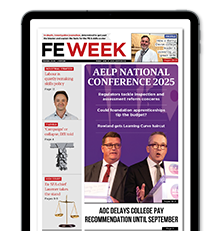The final impact assessment and equality impact assessment reports have been published by the Department for Business, Innovation and Skills (BIS).
The government estimates the “total net present value” for the FE loans scheme – which will affect all learners aged 24 and above studying at level three or higher from 2013 – to be £11,197 million.
However, the “business net present value” is estimated at a cost of £6 million, with a further £0.8 million as the “net cost to business per year”.
“Given tighter resources as a result of the Spending Review 2010 – the overall further education and skills budget will be reduced by 25 per cent between 2011/12 and 2014/15,” the report says.
“The challenge for government is to ensure that its remaining investment in this area is targeted such that economic impact, and therefore value for money, is maximised.”
The impact assessment report also reveals that the FE loans policy will be reviewed in September 2014.
(A full analysis of the the impact assessment and equality impact assessment reports will be published in the next edition of FE Week.)








wow, no Alternative Finance ’til 2015 *at the earliest*… This has to have an effect on Muslim learners? unlike HE loans which are capped at inflation, the FE loans have 3% on top which sounds pretty usurous to me (I am not an islamic scholar).
there seems to be something a bit askew in this whole thing. can one small market research exercise, particularly one that didn’t even seem to ask learners about their religion, really decide on the impact?